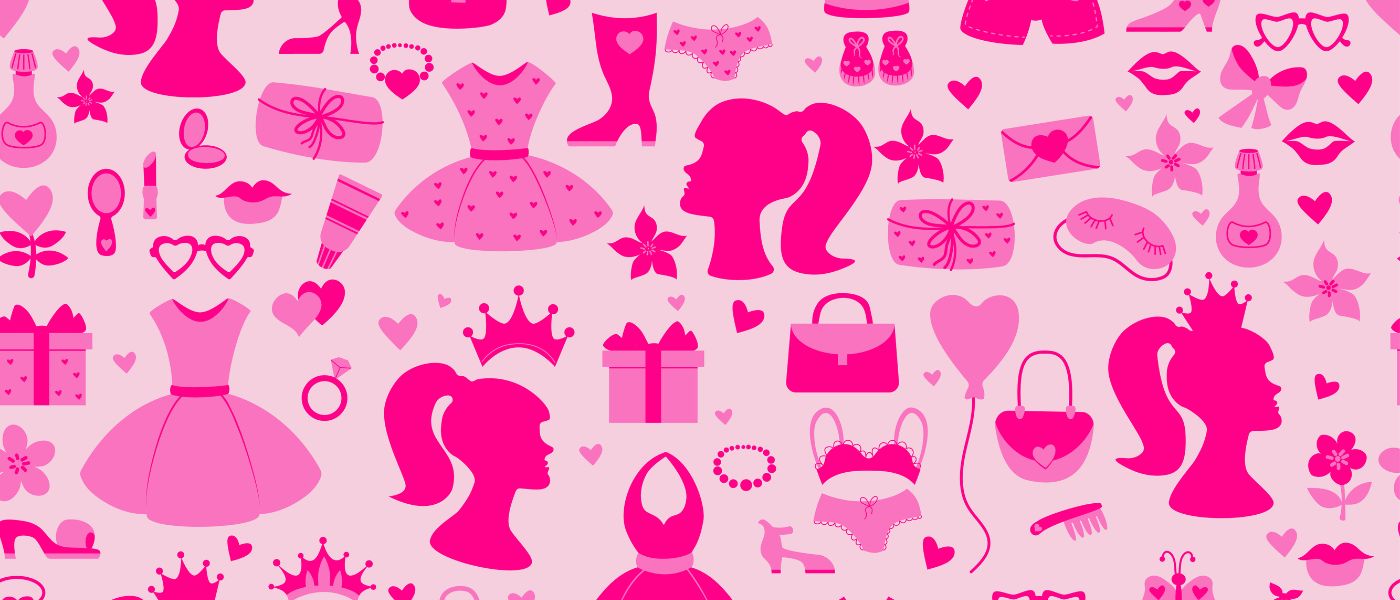For weeks now, the Barbie movie has swept the globe. From Barbie becoming a secret client in a Progressive Insurance commercial, to custom pink Crocs and even a Malibu DreamHouse that was available to rent on Airbnb, the film—and its more than 100 partnerships—have influenced myriad facets of consumer culture.
All of that frenzy led the movie—directed by Greta Gerwig and starring Margot Robbie and Ryan Gosling as life-size versions of the popular Mattel dolls—to gross over $1.91 billion worldwide since its release on July 21. It’s now the highest-grossing live-action movie solely directed by a woman.
To gain a deeper insight into both the movie and the doll, The Daily tapped into the expertise of three faculty members at Case Western Reserve University: Einav Rabinovitch-Fox, Deepak Sarma and Jonathan Ernest.
Rabinovitch-Fox is a lecturer in history in the College of Arts and Sciences who focuses on feminism and consumer culture; Sarma is the inaugural Distinguished Scholar in the Public Humanities and was a cultural consultant for Mattel; and Ernest is an assistant professor of economics at Weatherhead School of Management.
Read on to learn more about not only the economic impact of the movie and the franchise, but also their complex relationship with feminism. Caution: Spoilers ahead.
1. Barbie’s role in the labor force reflects that of today’s women.
Over the past 60 years, Barbie has held well over 200 different jobs, in many different areas of work. This activity has mirrored the overall increase in labor force participation by women in the United States economy. Only 32% of women were in the labor force in 1960, while now more than 57% of women have a job or are actively looking for one.
—Jonathan Ernest
2. Barbie has been a major player in the economy this summer.
After a couple of years of restrictions during the pandemic, many Americans have shown they are eager to enjoy activities outside of their homes. The summer of 2023 has been carried, in particular, by women who are willing to shell out large sums of disposable income to make up for lost time. Barbie, Taylor Swift and Beyonce have all had record-breaking success this summer, with movie theaters, concert venues, hotels and restaurants experiencing huge increases in sales in cities where one (or more) of the entertainment options were available.
—Ernest
3. The Barbie franchise in total revenue is impressive—but it’s not the most successful.
The Barbie doll is iconic, and it’s clearly a money-making success. Yet, at least in terms of total dollars spent, there are a few other icons that have brought in even more. Between merchandise, retail sales, box office receipts, and other ventures, Pokemon leads the way with more than $80 billion in sales since just 1996. Other successful franchises include Mickey Mouse, Winnie the Pooh and Star Wars.
—Ernest
4. The film deconstructs sex and gender.
It does so in a way reminiscent of Michael Foucault, Judith Butler, and even Nagarjuna, the 3rd-century Buddhist philosopher. Included in this annihilation of patriarchy is an even more outrageous suggestion, namely that all of reality is a human construction. Even more bold is the suggestion that our imagination is what gives us freedom and permits us to transcend human categories.
Strangely, I felt there were subtle allusions in the film to neuroplasticity, which is now a popular term in the Psychedelic Renaissance world, in which individuals have the capacity to change the way they think about things and to create better and more desirable worlds and attitudes.
—Deepak Sarma
5. Barbie the doll has a complex relationship with feminism.
The doll has always threaded a fine line between offering an empowering/feminist message and celebrating traditional ideas about femininity and gender. In 1959, when the doll came out, it revolutionized the toy business by offering girls aspirational role models beyond just training them to be wives and mothers. Girls who played with Barbie wanted to be Barbie, not to take care of her. This is why she also looked like a grown woman and not a baby. Mattel also marketed the doll directly to children, not their parents, again creating an empowering message.
—Einav Rabinovitch-Fox
6. Barbie the doll offered girls inspiration.
Barbie the doll offered girls a way to imagine themselves as career women, doctors, astronauts, and presidents, long before it was available to them in the real world. It was also fairly inclusive in terms of race, coming out with Black Barbie in 1980 and Latina Barbie in 1988, long before it was popular to directly market to these groups.
So in this sense, Barbie does offer an empowering message to women, which I think the movie does a good job in showing and navigating. And it also does a good job in critiquing Mattel for Barbie’s appearance, which upholds some unrealistic expectations regarding women’s bodies and beauty.
—Rabinovitch-Fox
7. The feminist vision that the doll and movie offer is very individualistic and commercialized.
It’s a version that feels good—but is also limited in a sense. Barbie in the movie doesn’t really dismantle the patriarchy, and while she managed to fend off the takeover of Ken, it’s not clear what will be the new status quo in Barbieland. Barbie in the movie doesn’t really want to change the real world, but this empowerment and awakening is framed as an individual journey.
Feminism as a social movement was always more than just that, and it doesn’t really come out in the movie. The final scene is maybe the closest critique Gerwig is making in this direction, alluding that the ability to control and know your body (and your genitals, which both Barbie and Ken don’t have) is the first step for liberation.
—Rabinovitch-Fox


